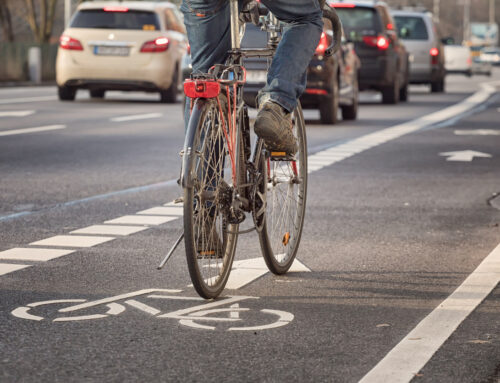Each year, the popularity of biking and walking increases as people look for alternative means of travel. But not all bikes are equally safe—leading to the question: Are e-bikes safer than regular bikes?
You might think that increased technology would translate to increased safety. Unfortunately, this is not always the case. To discover whether e-bikes are truly a safer alternative to regular bikes, take a look at the statistics below.
E-Bikes Are Growing in Popularity
E-bikes have grown drastically in popularity. In some cities, e-bike usage increased nine-fold since the start of the COVID-19 pandemic in 2020. This is largely because the fear of infection has caused a migration away from public transit.
Unlike traditional bikes, e-bikes don’t require any major exertion from their riders. Instead of pedaling, a rider can just sit on the seat and go along for the ride. Even pedal-assist bikes don’t require a lot of energy, as their engines kick in upon acceleration or while mounting hills.
On that note, let’s take a look at three different types of electric bicycles:
- Class 1 Bikes: Can reach 20 mph and require the rider to pedal
- Class 2 Bikes: Can reach 20 mph and do not require the rider to pedal
- Class 3 Bikes: Can reach 28 mph and do not require the rider to pedal
On paper, e-bikes seem to offer all of the eco-friendly benefits of traditional bicycles. And they travel faster. Sounds like a win-win-win situation, right? However, all of the benefits mean nothing if you can’t take advantage of them in a safe way.
The Increased Risk of Injury Associated with E-Bikes
Unfortunately, there is simply not enough data to provide a clear-cut answer to the question of safety for e-bikes. However, many studies point to an increased risk of injury for riders of these vehicles.
According to the United States Consumer Product Safety Commission’s National Electronic Injury Surveillance System (NEISS), e-bikes do appear to be more dangerous.
Here are some facts from the study’s findings:
- E-bike riders are more likely to suffer from internal injuries
- E-bike riding injuries are three times more likely to involve a crash with a pedestrian
- E-bikes riders are more likely to suffer from concussions
Concerningly, e-bike accident victims have a 17% risk of internal injury. Pedal-bike accident victims, on the other hand, have a 7.5% risk of the same type of injury.
The average pedal bicycle will reach around 15 mph, which is significantly slower than the average e-bike. This fact alone seems to indicate that e-bikes are more dangerous.
The Risk of Product Defects for E-Bike Riders
Outside of operator error, there are other factors that make e-bikes more dangerous than their traditional counterparts. Defective e-bikes can result in catastrophic injuries and accidents.
These defects can take several forms, including:
- Battery fires
- Tire blowouts
- Bearing lock-ups
- Front-wheel hub fork failures
- Controller malfunctions
- Battery malfunctions
- Throttle stickiness
If you do operate an e-bike, it’s good practice to check for defects before every ride. If you notice that something is amiss, don’t take any unnecessary risks. In some cases, you may be able to contact the manufacturer to get a replacement part.
What to Do After an E-Bike Accident
As with any other accident, your best course of action is to call 911 immediately. Even if you believe no one is injured, a quick check from a medical professional will ensure that is truly the case.
If possible, it may be best to avoid riding an e-bike entirely—at least until more information about their safety is released. Instead, you can opt to enjoy the many environmental, social, and personal benefits of traditional bike riding and walking.




































































Leave A Comment